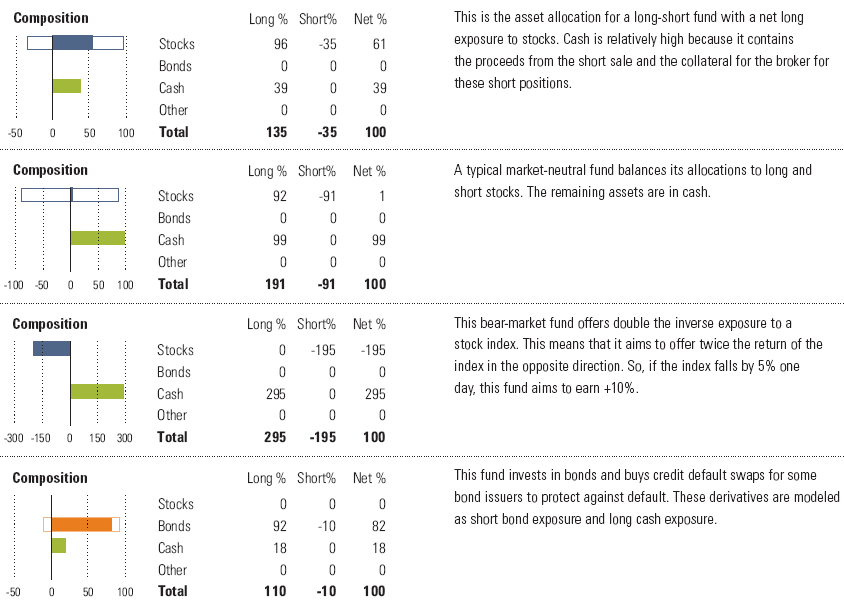

To establish a short stock position, the portfolio manager borrows shares of stock from another party, sells the shares and receives cash. The manager is then obligated to buy the stock and return the shares at some point in the future. Short positions produce negative exposure to the security that is being shorted. This means if the price falls after the short sale, the manager can profit from selling high and buying low. However, if the price of the security rises after the short sale, the manager will experience losses.
Morningstar calculates portfolio statistics on the short positions in each fund and displays long, short, and net statistics as appropriate. If a fund has many short stock positions, the percent of assets in stocks in the asset allocation breakdown may be negative.
Examples:
